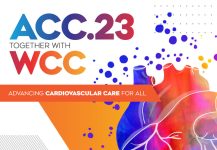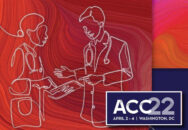Regardless of whether it is attempted through percutaneous coronary intervention (PCI) or myocardial revascularization surgery (MRS), complete revascularization (CR) is not always achieved. Overall, it is more frequent with surgery than with percutaneous treatment. Additionally, incomplete revascularization (IR) has proven to be associated with worse outcomes compared to CR. Researchers conducted an analysis of the…
Is Complete Revascularization Really Necessary after AMI in the Elderly?
The population over 75 is growing gradually, which entails an increase in acute myocardial infarction (AMI) in this group. As we all know, it is fairly common for AMI to present with multivessel disease. It has been shown that younger patients will benefit from complete revascularization vs. a simple resolution of the culprit vessel. However,…
ACC 2023 | Complete Revascularization Strategies in patients with ACS and Multivessel Disease
In patients with acute coronary syndrome (ACS) and multivessel disease, complete revascularization is associated with better clinical outcomes. However, for non-culprit vessel revascularization the strategy remains unclear. The aim of this multicenter, open label, randomized, non-inferiority study, was to determine whether complete revascularization during index procedure is non inferior vs. staged. Primary end point was…
ACC 2022 | COMPLETE
Percutaneous coronary intervention improves angina related quality of life in AMI patients with multivessel disease. The COMPLETE study has shown patients receiving complete revascularization compared against culprit-only revascularization presented lower cardiovascular rate or AMI at 3-year followup. ACC featured a COMPLETE subanalysis assessing angina related quality of life. It included 4041 patients, mean age 62,…
ACC 2022 – Complete Trial QoL: Complete Revascularization in STEMI
The COMPLETE study has shown complete revascularization in STEMI reduces cardiovascular mortality or new AMI, which generated a change in ACC/AHA 2021 revascularization guidelines. However, its impact on quality of life is yet to be studied. The aim of this prespecified analysis of the COMPLETE study is to determine whether complete revascularization improves quality of…
Non-Culprit Vessel Angioplasty in the Elderly: Choosing the Right Cases Is Important
This large analysis found no benefit at a 1-year follow-up to angioplasty of non-culprit vessels in elderly patients admitted with ST-segment elevation myocardial infarction. The COMPLETE study was presented at the European Society of Cardiology 2019 Congress (and simultaneously published in NEJM) with evidence that seemed to leave no doubt regarding this issue. However, new…
Complete Revascularization after Pharmacoinvasive Strategy
Patients initially receiving pharmacoinvasive strategy for ST elevation myocardial infarction (STEMI) also presenting multivessel disease consistently benefit from complete revascularization. This benefit is similar to that of primary PCI. The COMPLETE showed that staged non-culprit lesion percutaneous coronary intervention (PCI) reduced major cardiovascular events in STEMI patients with multivessel coronary artery disease. This benefit was…
FLOWER-MI: FFR vs. Angiography for Complete Revascularization in Infarction
Functional assessment with fractional flow reserve (FFR) was not better than conventional angiography to guide complete revascularization in patients with multivessel lesions in a setting of ST-segment elevation myocardial infarction and successful primary angioplasty. These results were published in the New England Journal of Medicine (NEJM) and presented during the American College of Cardiology (ACC)…
Visual Assessment for Non-Culprit Lesion Revascularization
There is evidence in favor of complete revascularization in the context of ST elevation MI with multivessel disease where primary PCI has been successful. However, the small print in these studies should be read carefully. Should revascularization be completed during index intervention, index hospitalization or after discharge? Should complete revascularization be based on visual assessment,…
AHA 2019 | COMPLETE: Complete Revascularization Is Superior since It Treats Other Vulnerable Plaque
This COMPLETE sub-study using optical coherence tomography (OCT) showed the prevalence of vulnerable lesions other than the culprit which should provide a physiopathological explanation of the benefit of complete revascularization observed in the original study. STEMI patients with multivessel disease will benefit from complete revascularization in terms of reduced cardiovascular death and repeat MI according…








